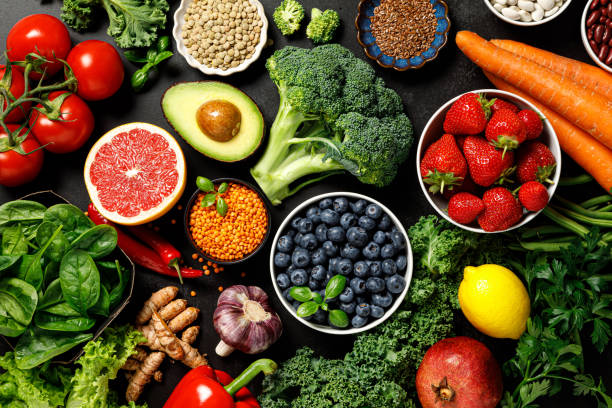When it comes to maintaining a healthy diet, vegetables are an essential component. Not only are they packed with essential vitamins and minerals, but they are also low in calories, making them a perfect choice for weight loss and weight maintenance. But just how many calories are in different types of vegetables?
It’s important to note that the calorie content of vegetables can vary significantly depending on the specific type and the method of preparation. For example, a cup of raw broccoli contains only 55 calories, while a cup of fried broccoli Florets has almost triple the amount of calories at 155. Similarly, a cup of raw spinach has only 7 calories, but a cup of cooked spinach has 41.
With that in mind, here is a breakdown of the calorie content of some common vegetables:
Asparagus: 27 calories per cup (raw)
Avocado: 234 calories per cup (cubed)
Beet greens: 35 calories per cup (boiled)
Bell peppers: 24 calories per cup (raw)
Broccoli: 55 calories per cup (raw), 155 calories per cup (fried broccoli Florets)
Brussels sprouts: 56 calories per cup (boiled)
Cabbage: 22 calories per cup (raw)
Carrots: 52 calories per cup (raw)
Cauliflower: 25 calories per cup (raw)
Celery: 16 calories per cup (raw)
Collard greens: 49 calories per cup (boiled)
Cucumber: 16 calories per cup (raw)
Eggplant: 35 calories per cup (raw)
Green beans: 44 calories per cup (boiled)
Kale: 33 calories per cup (boiled)
Lettuce: 10 calories per cup (shredded)
Mushrooms: 15 calories per cup (raw)
Okra: 33 calories per cup (boiled)
Onions: 64 calories per cup (sliced)
Peas: 117 calories per cup (boiled)
Radishes: 19 calories per cup (raw)
Spinach: 7 calories per cup (raw), 41 calories per cup (cooked)
Squash: 36 calories per cup (raw)
Sweet potatoes: 103 calories per cup (baked)
Tomatoes: 32 calories per cup (raw)
Turnip greens: 28 calories per cup (boiled)
Zucchini: 33 calories per cup (raw)
It’s worth noting that the calorie content of vegetables can also be affected by the way they are cooked. For example, roasting vegetables can add calories due to the oil used in the cooking process. Similarly, adding cheese or other high-calorie toppings to vegetables can significantly increase their calorie content.
Despite the potential for variation in calorie content, vegetables are generally considered to be low in calories and an important part of a healthy diet. It’s recommended to include a variety of vegetables in your diet, both for their nutrient content and for the added benefits of fiber and antioxidants.
In addition to their low calorie content, vegetables are also an excellent source of essential vitamins and minerals. For example, leafy green vegetables such as spinach and kale are high in iron and calcium, while bell peppers and tomatoes are rich in vitamin C.
Despite their low calorie content, vegetables are an important source of essential nutrients. Leafy greens, such as spinach and kale, are high in vitamins A, C, and K, as well as calcium and iron. Non-leafy vegetables, like broccoli and peppers, are rich in vitamin C and other antioxidants. Starchy vegetables, like potatoes and corn, provide energy-rich carbohydrates.
Incorporating a variety of vegetables into your diet is a great way to ensure that you are getting all of the nutrients your body needs. Aim to eat a minimum of five servings of vegetables per day, which is the equivalent of about 2.5 cups.
There are many delicious and creative ways to include vegetables in your meals. Some ideas include adding leafy greens to salads or sandwiches, roasting non-leafy vegetables as a side dish, and using starchy vegetables as the base for casseroles and soups.

 Home
Home Health
Health Diet & Nutrition
Diet & Nutrition Living Well
Living Well More
More












